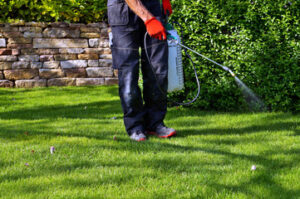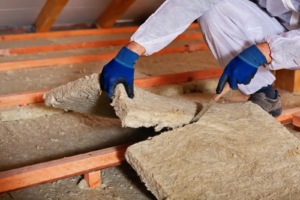Air conditioning cools, dehumidifies and circulates air in indoor spaces to maintain a comfortable temperature. It involves the transfer of heat from inside a house to outside through a refrigerant and an evaporator coil.
Portable air conditioners are self-contained units great for a solitary room. Ductless mini-split systems can be installed in sunrooms and garages. These flexible systems also provide zoning control. Contact All Temp Air Conditioning and Refrigeration now!

Air conditioning is one of the largest energy consumers in homes and businesses. It can be costly for families and businesses to operate, and it also puts a strain on electricity grids. In addition, air conditioners can create heat that warms the planet and contributes to climate change.
To counter this, the world is seeking ways to improve efficiency and reduce energy consumption. These strategies range from simple lifestyle adjustments to implementing more efficient equipment.
One common method is to upgrade existing AC systems with more energy-efficient models. This can reduce energy usage by 28%, saving you up to $300 per year in energy costs (depending on your usage rate and the cost of electricity).
Another way to improve energy efficiency is to replace old insulation and ducts. These upgrades can significantly cut cooling costs by reducing the amount of heat that is lost through the duct system. Additionally, installing smart thermostats can reduce energy use by automatically changing heating and cooling settings based on occupancy and time of day.
Other technologies can play a major role in cooling homes and offices without using as much energy, such as fans and dehumidifiers. The latter can help lower humidity levels and provide significant relief from discomfort, particularly in humid environments. Researchers are also exploring new methods to dehumidify the air, such as using living membranes and physical desiccants that can suck moisture out of the air rather than relying on energy-powered processes.
Finally, leveraging renewable sources like solar panels can provide power to HVAC systems, further reducing reliance on non-renewable resources. Many people are unaware that they can save energy by turning off lights and appliances, which gives the air conditioner a break from working so hard to cool the room. They can also turn off the TV or computer when not in use and set the temperature a few degrees higher to conserve energy.
To further improve energy efficiency, choose air conditioners with a high SEER rating and look for the ENERGY STAR label. This means that they are more energy-efficient than standard models and can reduce your electricity costs by up to 8%.
Maintenance
Air conditioning maintenance keeps your system operating at peak efficiency, lowers energy bills, prevents costly repairs and extends the life of the system. It also improves indoor air quality and occupant comfort.
It’s important to change or clean your filter on a monthly basis (do this every month during cooling season for central AC systems, and do it twice a year for window units). This is one of the most basic AC maintenance tasks that you can do yourself.
A dirty air filter causes your system to work harder, reducing its efficiency and causing poor indoor air quality. Cleaning or replacing your filter is a quick and easy DIY task that’s worth the effort.
Thermostat calibration and temperature control checks ensure the thermostat is turning on and off at the right times and maintaining a set temperature. A visual inspection of the evaporator coil for cleanliness and debris removal is an important part of maintenance.
Electrical terminals and connections are tightened, cleaned and lubricated to reduce wear and tear. The condensate drain is checked to be clear of blockages.
In addition, we visually inspect the fan motor and blades to identify any potential problems. The indoor HVAC unit can be chemically cleaned with specialized equipment but is generally left to qualified HVAC technicians due to safety and technical considerations.
Remove structures, items, bins and organic matter from around the outdoor AC unit (condenser/compressor). This helps to maintain proper air flow and prevents pests and rodents from nesting inside. Consider covering the outdoor unit during cold months, but be sure to remove it during summer use to allow it to breathe. It’s also important to clear the fan cage, and rake back leaves and shrubbery at least two feet from the unit to keep it free of debris. If you have an outdoor unit, we recommend a yearly check-up by a licensed HVAC technician to help you prevent expensive repair costs and prolong the life of your system. An annual tune-up increases energy efficiency, reduces malfunctions and failures, ensures safe operations and can detect small issues like a refrigerant leak or clogged drain line.
Repairs
When your air conditioner malfunctions, it’s important to contact a professional right away. This will help to reduce the risk of further damage and ensure that you don’t face higher repair costs down the road. A good way to find a reliable repairman is to ask friends, neighbors, and coworkers for recommendations. Also, look for online reviews on sites like Google and Yelp. Check for consistency in ratings and feedback about professionalism, promptness, and quality of work.
Top HVAC NYC specializes in air conditioning installation and repairs. The company’s technicians can handle a variety of problems, including clogged coils, faulty thermostats, high electric bills, and odd smells. They can also handle duct cleaning and maintenance, steam cleaning, and heating system repairs. The company has been serving the New York City area since 1927.
212 HVAC serves residential and commercial clients in the New York City metro. The company offers AC installation, repair, and replacement, furnace repair, boiler repairs, duct cleaning, carbon monoxide testing, and indoor air quality assessments. Its services are available 24/7 for emergency repairs. The company is a licensed contractor and is accredited by the Better Business Bureau.
The technicians at Jones Services are certified by the Comfort Institute and have more than 30 years of experience in providing residential and commercial air conditioning and heating service in New York City. They specialize in repairing various types of air conditioners, and they can replace the compressor, blower motor, evaporative coils, and condensate pumps. They can also replace the air filters and refrigerant.
Air conditioning repairs are a vital part of keeping your home comfortable. However, many homeowners wait to call a repairman until their system is broken or not working properly. This can lead to more expensive repairs and reduced energy efficiency. Fortunately, there are ways to prevent air conditioning problems from occurring in the first place.
The most common cause of a broken AC is a dirty filter, which can restrict air flow and overheat the unit. A clean filter will keep your air conditioner running efficiently and avoid costly repair or replacement expenses. If you notice that your filter is dirty, wash it with a mixture of water and bleach and then rinse it off.
Replacement
Air conditioning units can have a long lifespan, but they do reach the point where replacement is the best option. A new system will save you money on energy bills, repair costs, and will have a longer lifespan than your current unit. The cost of a new unit can be offset by federal and local tax credits as well as rebates offered by manufacturers.
It’s also worth noting that a new system can boost your home’s resale value if you ever choose to sell in the future. However, keep in mind that any money spent on a new system is still an investment and you should be sure to consider your budget as you make this decision.
If your aging AC unit is showing signs of age, it’s important to have a professional look over the unit before making a decision. It’s possible that your system only needs a few repairs to get it back up and running again, rather than having it replaced entirely. You should also consider whether your older AC unit is contributing to indoor air pollution by circulating toxins, mold and dust into the air.
An experienced professional can help you select the right system for your home, taking into consideration the size of the house, current ductwork, and any shading in the area. They’ll be able to advise you on the minimum required BTU’s (British Thermal Units) and ensure that your home’s electrical system can support the load requirements of your new unit. You may wish to opt for a model that has features such as directional airflow, digital thermostat readouts and easy-to-use controls.
It’s also important to note that air conditioners are generally made up of a matching indoor air handler and outdoor air conditioning unit. Replacing one without the other will reduce your system’s overall efficiency and could lead to additional failures. A technician will typically perform pressure and vacuum tests on the new unit to ensure that it’s working properly before adding refrigerant. Once everything is complete, they’ll give you a full overview of how to use the new air conditioning system and answer any questions you might have.








